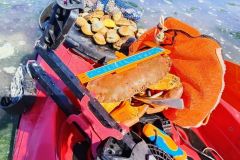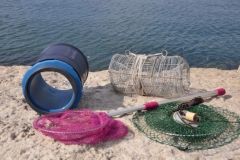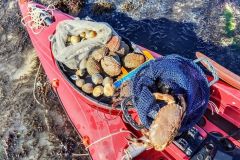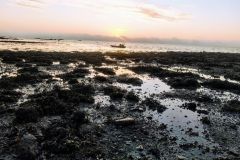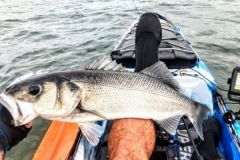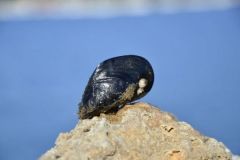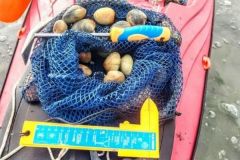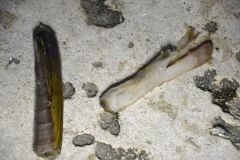4 days of high tides
Four days of high tides lay ahead of us this time. With coefficients of up to 115, it was starting to get interesting. Of course, you have to be careful with coefficients like that, especially if you're walking along the shore from the coast. Two days ago, people drowned in Vendée and Normandy. The rule of thumb is to know the time of slack water and to head back as soon as you get there. In this respect, kayaking remains an interesting safety alternative, allowing you to land where no one else goes.
This year, if the weather was good, the wind was also present, as I show in the attached video, you need a stable, seaworthy fishing platform and to be in good physical condition. For these tides, my priority was abalone, crabs and clams. Scallops, which are very abundant, are still forbidden to be picked until October 01, so we leave them on the foreshore. While we wait for the foreshore to open up, we pass the time by doing a little fishing. Especially cephalopods, which are also very present at the moment. The tataki method is the best option. Cuttlefish and squid can't resist it. Sea bass, mackerel, horse mackerel and old ladies are also active, so there's plenty to keep you amused while you wait to land on the beach.
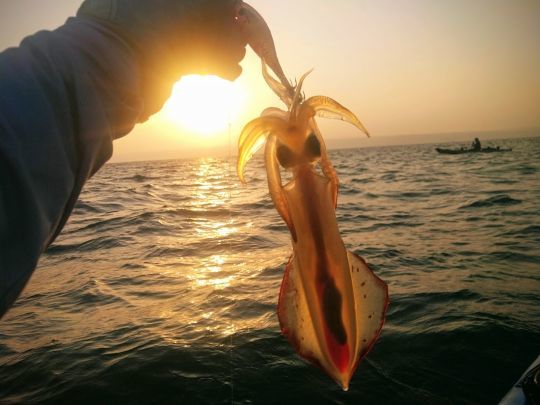
Clams, crab and abalone
As usual, we start with the first spots to be discovered, which are large clam beds, with the occasional clam. The quota is quickly reached. Our regulations allow 150 pieces per person, and they have to be 4 cm wide. Harvesting of this species is open all year round, you just have to keep an eye on the by-laws that may close this fishery for health reasons. This applies to practically all species, so don't hesitate to ask for information about your area before you go foraging. Once the dish of clams has been collected, they will be served as an aperitif with snail butter, and we move on to crabs and abalone.
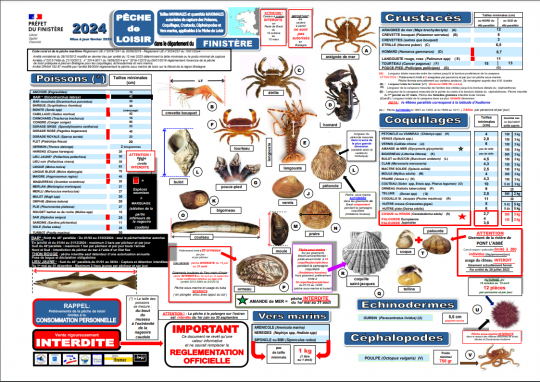
Although we're regularly told that octopuses eat all the sleepers, we regularly find them on our fishing grounds, and in large numbers and beautiful specimens. We only pick up the males, and it's not uncommon for these crabs to be larger than the calipers we use to measure them. Since this year, the minimum size has been increased to 15 in width north of the 48th, and there's always that famous administrative border...
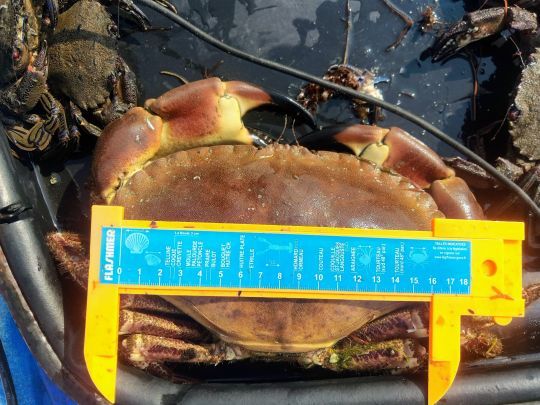
Along with crab cakes, another popular crab in our region is the crab crab crab, also found in large numbers. Here too, only the males are harvested, and their size is 6.5 cm wide. For both species, family consumption is the norm, so be reasonable!
The last shellfish to complete the seafood platter is the abalone, Brittany's emblematic shellfish. They, too, are very present on our spots. Fishing is prohibited during the summer. It reopens on September 1. The regulatory mesh size is 90 mm and the quota is 20 per fisherman per day. That's more than enough to have fun.
Other "accessory" catches include clams, cockles, pearls, scallops, almonds and varnishes. A few lobsters are also present, but they're rare, and next month we'll be able to harvest scallops...
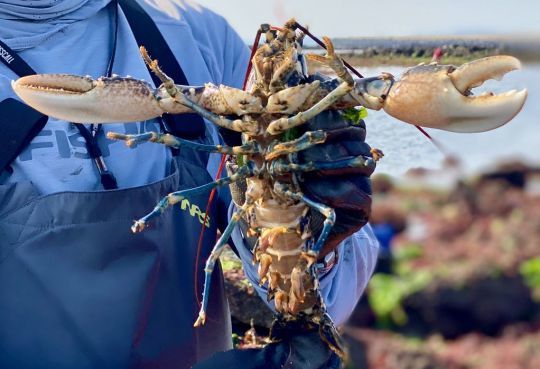
In the attached video, I show the return of the tide, which was eventful. This is to show that even in a so-called sheltered spot, even in the 300 m band, the sea can be rough and the wind can blow very hard, so be careful in all circumstances - sea spray is good for the skin!





